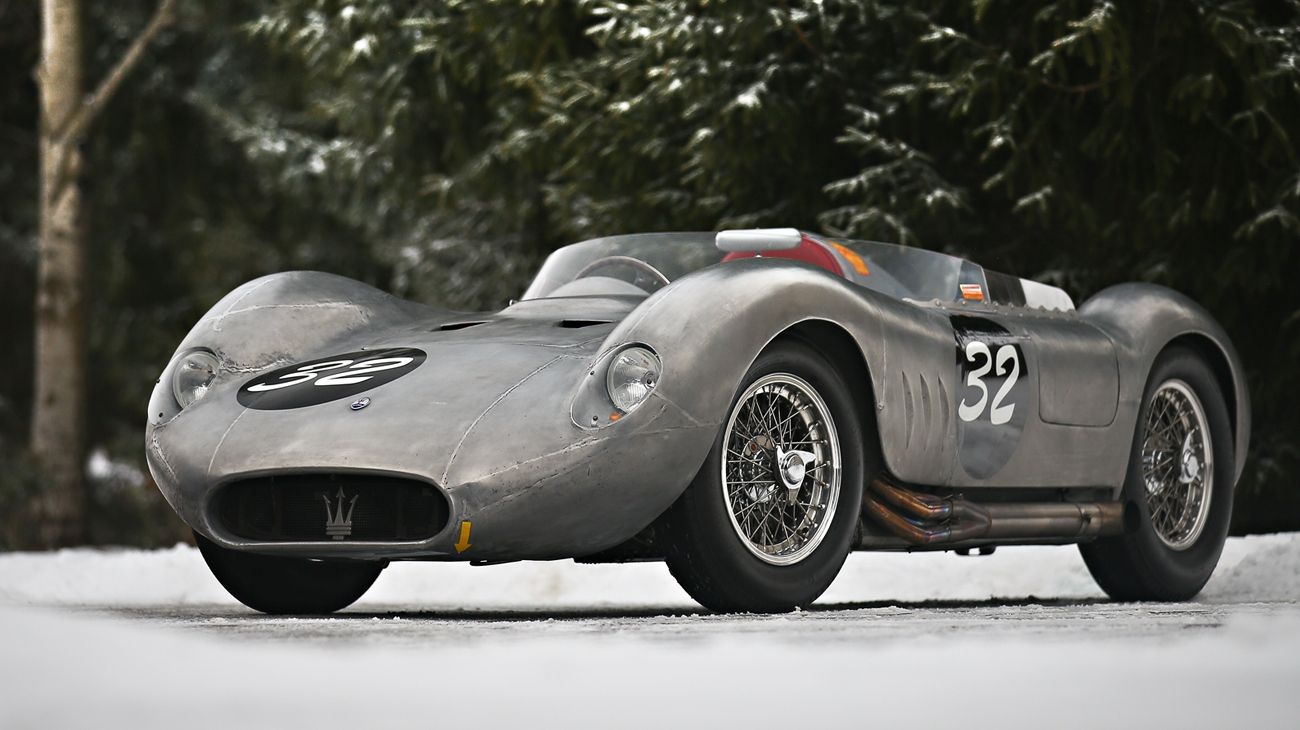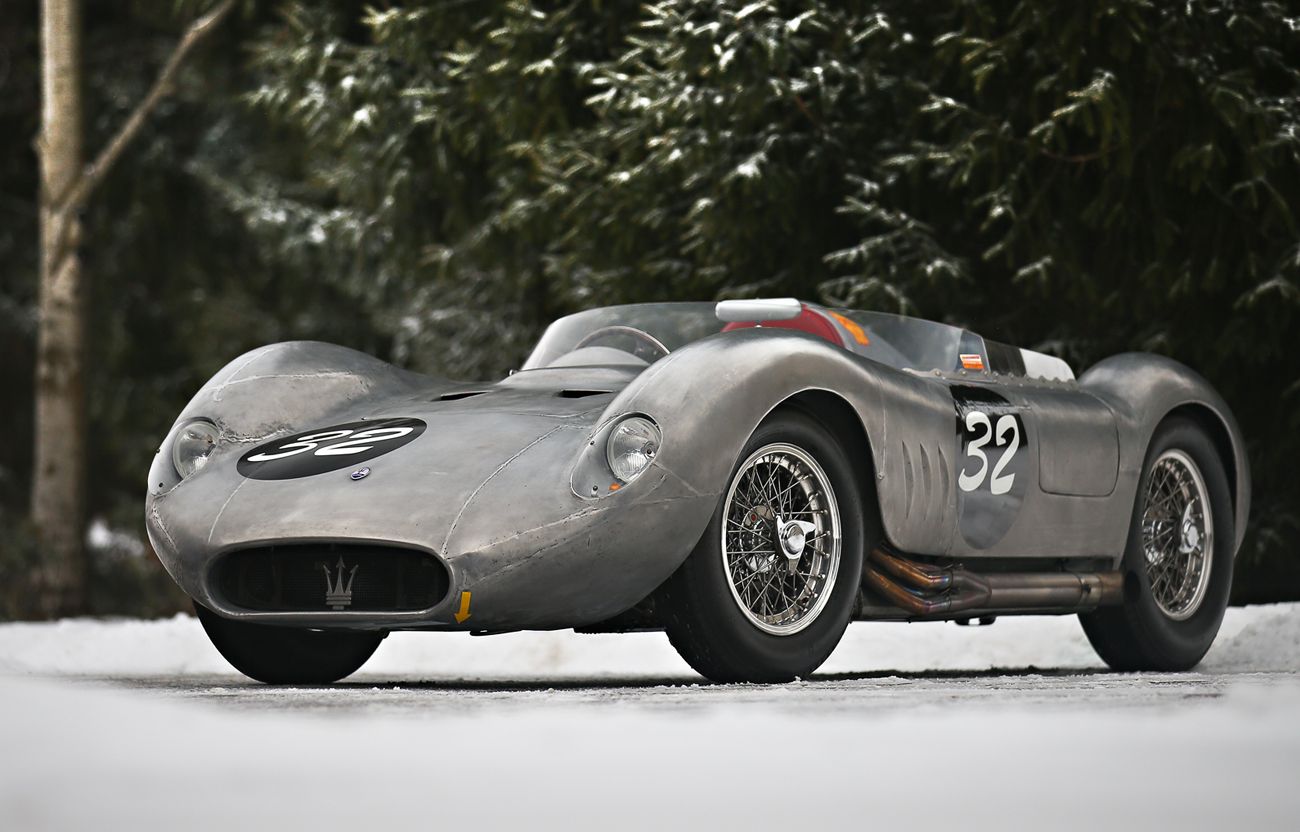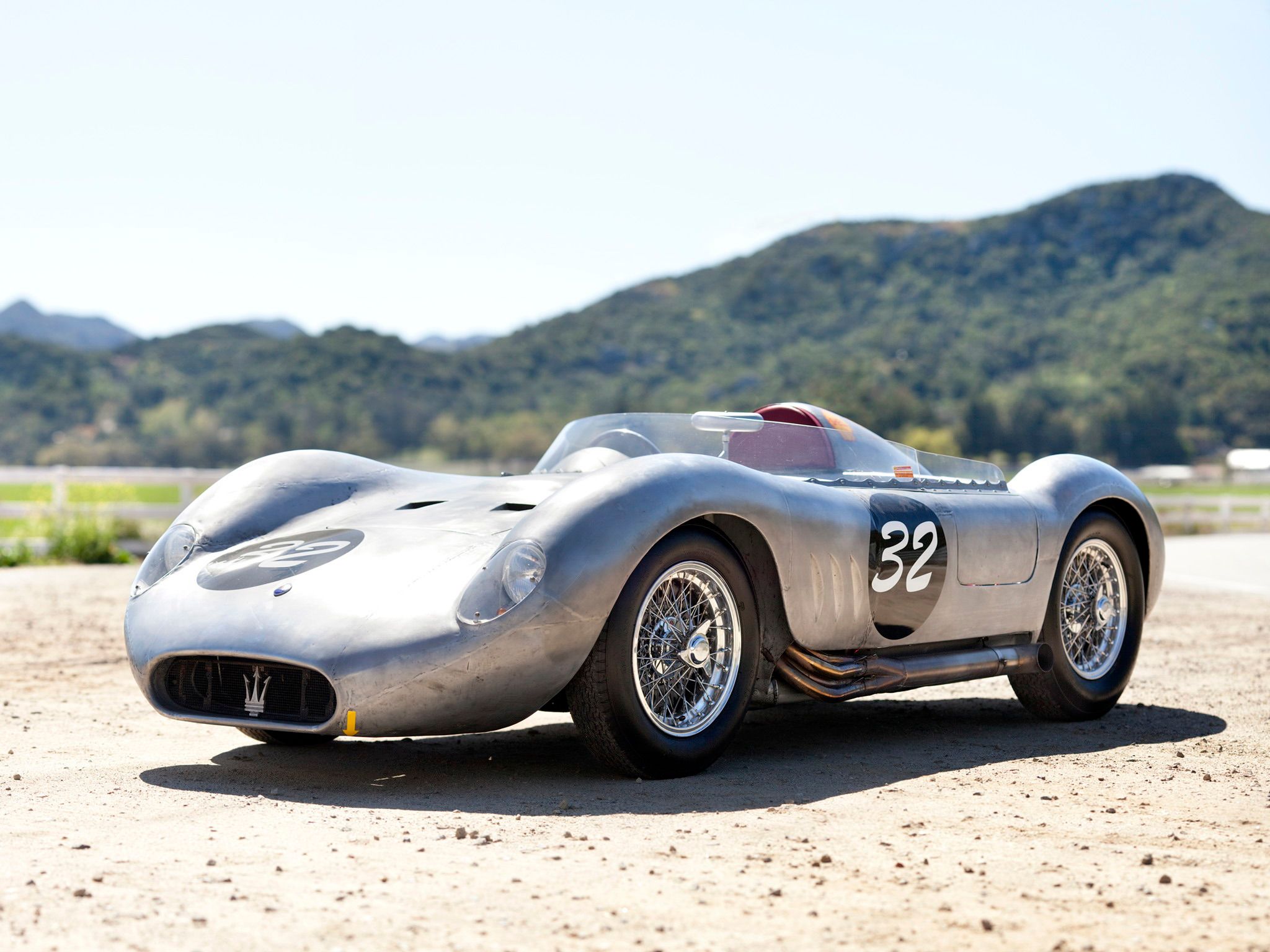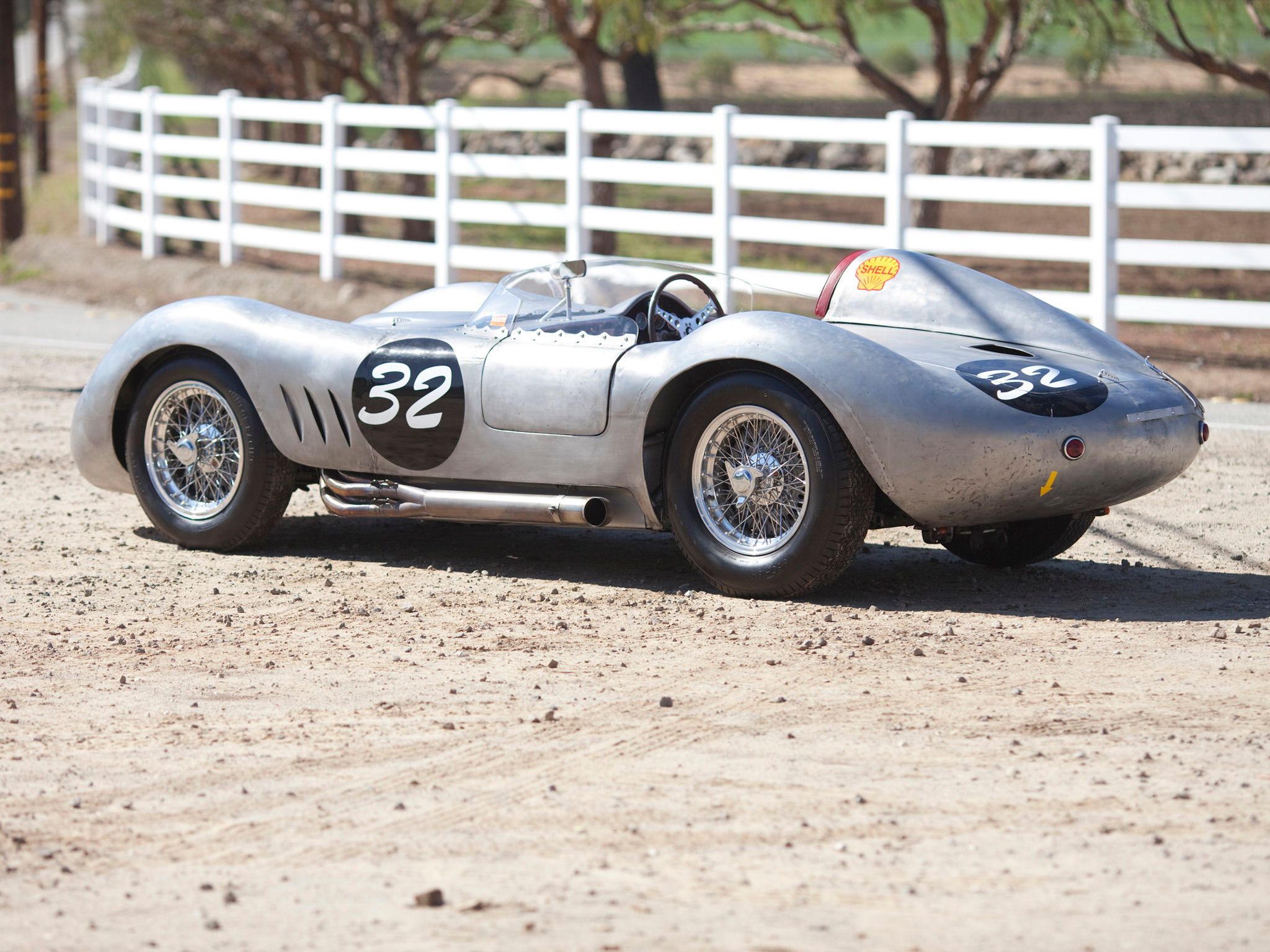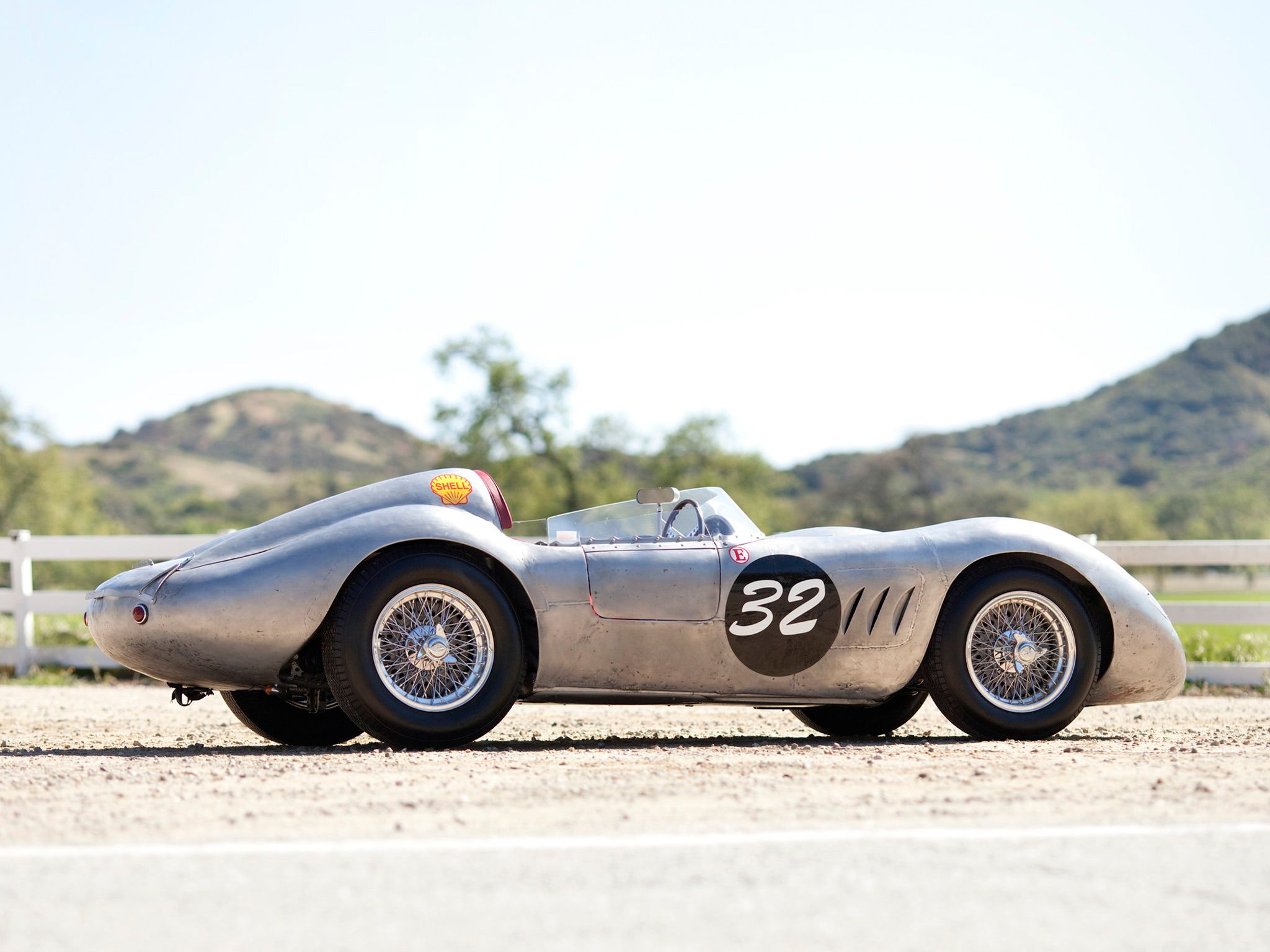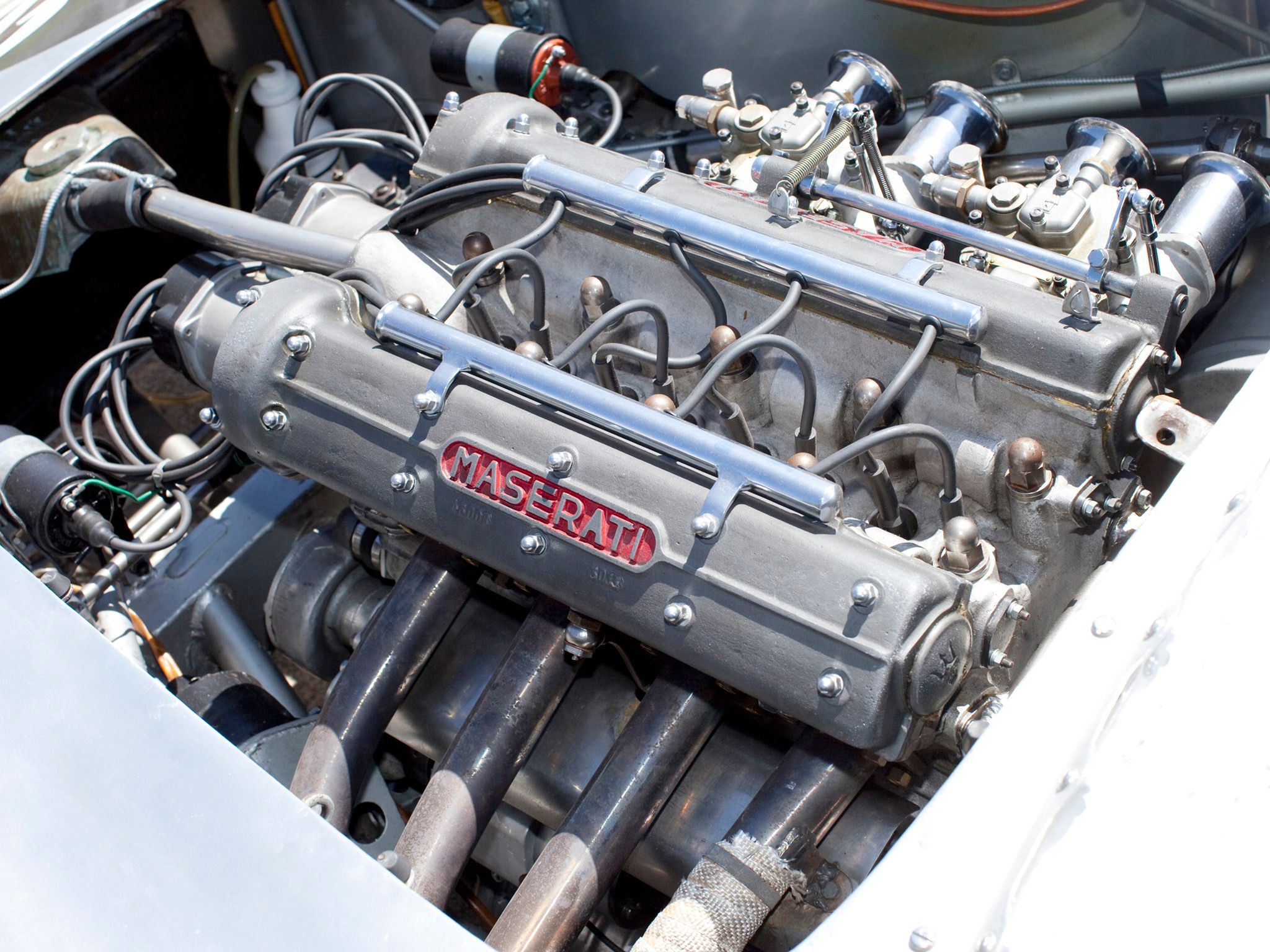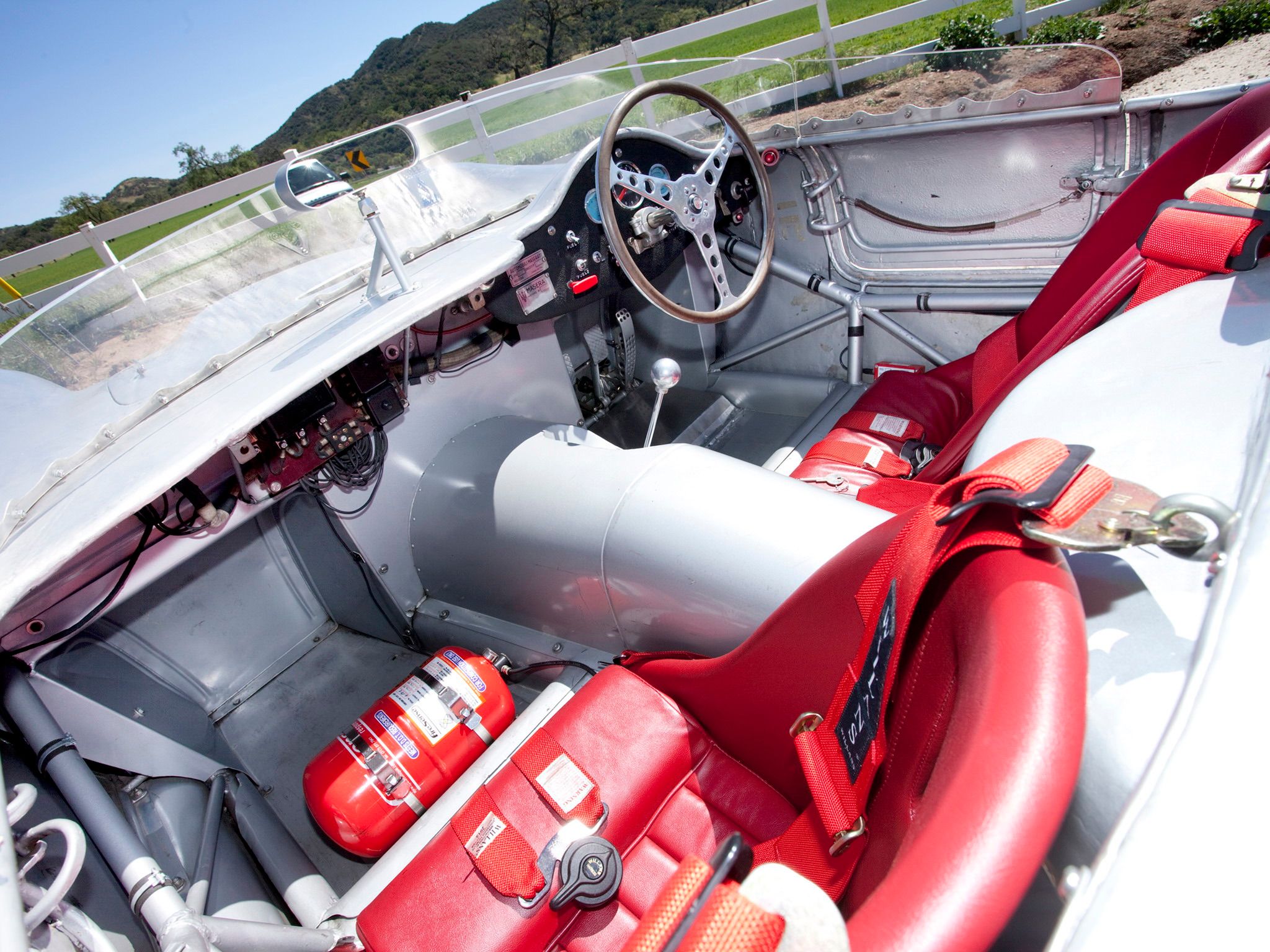Usually, ultra-rare antique collectible cars are polished to a mirror finish, glistening with pristine perfection like the first day they rolled onto pavement. This is not one of those cars. This Maserati->ke51 brings with it a raw personality and racing heritage. The exterior is unpainted, bearing welds and seams that exhibit its competitive evolution. Its cockpit has housed many racing legends. Its drivetrain was cutting-edge for the time.
The silver bullet before you is the very first Maserati 200 S ever built, chassis number 2401. It’s Maserati Classiche Certified, and was used extensively as a works team and development car, eventually receiving an update to SI-spec in the mid 50s. It’s won a slew of prominent races, and features a Formula 2 engine and unique, handcrafted aluminum body. Its provenance is extensive, including period photos, magazine articles, and copies of the original build sheets.
It is Maserati history incarnate, with all its glory and imperfections, and it’s looking for a new home. All you need is just a couple million dollars, and hopefully, a nitrogen-filled garage.
Continue reading to learn more about the 1956 Maserati 200 SI.
1956 Maserati 200 SI
- Make: Array
- Model: 1956 Maserati 200 SI
- Engine/Motor: inline-4
- Horsepower: 186 @ 7200
- Torque: 147 @ 5500
Car History
Back in 1955, Maserati unleashed the 200 S as a replacement for the successful A6GCS/53->ke4730, eventually changing the name to "SI" after several specification changes. SI stood for Sport Internazionale, which was a class of racing that called for functional doors, a soft-top roof, and a full-width windshield. That meant the SI saw competition with both the works team and privateers in the two-liter sports class, with the Ferrari->ke252 500TR as its main competitor.
The first three cars were built internally at Maserati, with their aluminum bodies outsourced to Celestino Fiandri. In 1955, chassis number 2401 made its racing debut in 200 S spec at the Imola Grand Prix with Franco Bordoni at the wheel. Bordoni also raced the car at the Targa Florio with Giovanni Bracco.
In 1956, the above-pictured vehicle was upgraded to SI-spec, while in that same year, Stirling Moss took the helm to clinch an underdog victory at the Trofeo Supercortemaggiore, besting no fewer than four Ferrari 500TRs in the process. He described the car as “very quick on twisty circuits” and that it “handled really nicely.”
Cesare Perdista later tested the car at Monza, followed by a win from Jean Behra at the Grand Prix di Bari on the Adriatic coast. Other accolades include a first-place finish in the 1956 Trofeo Vigorelli, the 1956 Gran Premio di Napoli, the 1956 Gran Premio di Bari, and a first in class at the 1956 Grand Prix of Caracas, plus a podium finish at the Nurburgring. In 2010, the car also took Best in Class at the Amelia Island Concours d’Elegance.
Exterior
As the first 200 S built, chassis number 2401 debuted in May of 1955 wearing the same coachwork as the preceding 150S. Maserati gave it a “Foglio di Montaggio” on April 26, 1956, three days before it was slated to compete at the Mille Miglia, where it unfortunately suffered brake problems. A month later, 2401 received a new coachwork design from Fantuzzi, which it still bears today. Dry weight with the aluminum body is just 1,455 pounds.
The chassis design is similar to other Maseratis from the time, manufactured by Gilco, using two main oval-tube longerons. The welds reflect where vents were added, sections lengthened, and the cockpit altered, offering a distinct trail of the car’s development.
Exterior Dimensions
|
Wheelbase |
2,150 MM (84.6 Inches) |
|
Front track |
1,250 MM (49.2 Inches) |
|
Rear track |
1,200 MM (47.2 Inches) |
|
Length |
3,900 MM (153.5 Inches) |
|
Width |
1450 MM (57.1 Inches) |
|
Height |
980 MM (38.6 Inches) |
Interior
As a car strictly designated for track use, you won’t find much comfort in the open-top interior. There’s space for two, but a long and bulbous transmission tunnel separates the two seats. The car has modern safety harnesses, but the steering wheel is original, and there’s plenty of bare metal to match the exterior aesthetic. The doors are tiny, only added for racing regulations.
However, the true appeal of the interior is not in the appointments, but in the names that sat in it, which include Bracco, Villoresi, Behra, Moss, Musso, Bellucci, Taruffi, and many others.
Drivetrain
Powering the 200 SI is a 2.0-liter DOHC, twin-plug, inline four-cylinder with twin Weber 45 DCO3 carbs. Designed by Vittorio Bellentani, it’s a 2.0-liter version of the four-cylinder engine used in the 150S, featuring advanced technology like dry-sump lubrication and an aluminum alloy block with cast iron liners. It uses a hemispherical combustion chamber with 80 degree angled valves. Bore is 3.62 inches and stroke is 2.95 inches, with a compression ratio of 9.8:1.
The engine when new was rated at 195 horsepower at 7,500 rpm, which is an immense specific output for a car from the 50s. Acceleration figures include a 0-to-100 mph time of roughly 7.3 seconds and a top speed of 155 mph, both considered blisteringly quick. A five-speed manual ZF transaxle routes the muscle, while four-wheel hydraulic drum brakes slow it down.
The independent-wishbone suspension up front uses coil springs and Houdaille shock absorbers. In back is a De Dion axle with traverse semi-elliptical leaf springs, also paired with Houdaille shock absorbers. The suspension was praised by racing drivers worldwide. The tires are from Pirelli, measuring 5.25 inches wide up front and 5.5 inches wide in the rear. Wheel diameter is 16 inches.
Drivetrain Specifications
|
Engine |
Inline-4 |
|
Power |
186 HP @ 7,200 RPM |
|
Torque |
147 LF-FT @ 5,500 RPM |
|
Transmission |
4 or 5 Speed Manual Transaxle |
|
Top Speed |
249.4 KM/H / 155.0 MPH |
|
0 - 100 mph |
7.3 seconds |
Prices
Chassis number 2401 went up for sale as Lot 56 at the Amelia Island Auction last month, but failed to exchange hands. However, the car was sold in 2010 at the Pebble Beach Gooding & Company Auction for $2.64 million.
Competition
Ferrari 500TR
Note: vehicle pictured is 1957 Ferrari 500 TRC Spider.
The on-track battle between the Italian makes in the mid to late 50s included the stunning open-top Ferrari 500TR, the first vehicle to bear the iconic Testa Rossa nomenclature. The TR replaced the 500 Mondial as a small, lithe sports car, and featured coil-spring suspension and a synchronized transmission with a two-disc clutch. Curb weight was roughly 1,500 pounds, while its 2.0-liter inline-four cylinder engine produced a Maserati-matching 190 horsepower.
Conclusion
It’s not often you find an antique where originality doesn’t include a factory-correct paint job, but that’s just one of things that makes this particular vehicle so special. It’s a born-and-bred race car, with a history book’s worth of heritage and famous names to pin to it.
As a car that’s most comfortable tackling a race track, chassis number 2401 continues to attack apexes to this day, with fresh successes at the Monterey Historics, the Coronado Speed Festival, Moroso Park and the Shell Historic Challenge.
And even though it was created primarily for speed, it’s also a favorite at Concours events as a standout among the pampered trailer queens and barely used show cars. At its heart, this car is an icon of a bygone era in racing, and that alone makes it great.


